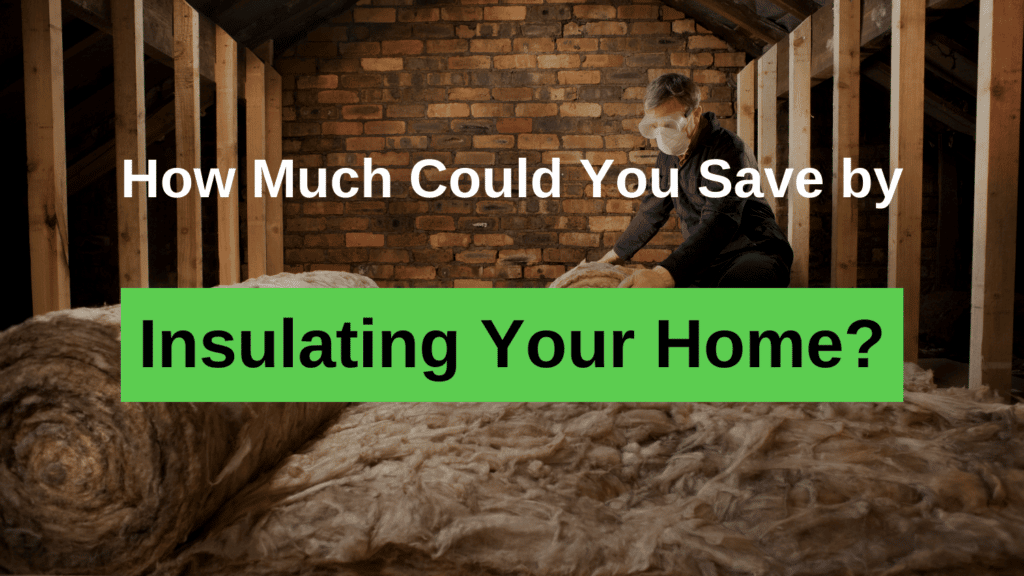Fall months are full of joy: colorful foliage, festive holidays and the first snowfall. One thing that isn’t so fun? As the temperature drops, the thermostat is cranked up, so do energy bills.
The U.S. According to the U.S. Department of Energy, 49% of homeowners’ energy bills are spent on cooling and heating. Your home’s insulation is a major reason why your energy bills can spike in winter and summer. An energy-efficient home will help you keep your electricity bill under control. How can home insulation help reduce energy bills? Let’s take an in-depth look.
What is home insulation?
All insulation has the same goal: to reduce heat transfer into and out of your home. There are many types of insulation materials available, including fiberglass, polystyrene and mineral wool. There are many options for how to apply it: spray-in foam, loose-fill or rolls of batting. It all depends on the needs of your home.
How does Insulation work?
It is a simple concept. Insulation works by trapping small pockets of air to slow down heat movement out of the house in winter and in summer. The insulation’s resistance to heat transfer is measured by the R-value. If it is installed correctly, it will be higher.
Do you need new insulation?
The North American Insulation Manufacturers Association, (NAIMA), states that 90% of single family homes in the U.S. are under-insulated. This means that there are good chances your house needs some attention. Particularly vulnerable are homes built before 1960.
To determine if your insulation meets the standards, you should evaluate it (its thickness and type) and compare its R-value with that of the U.S. The recommendations of the Department of Energy for your area.
This can be done by looking at unfinished walls or ceilings to determine if they are insulated. You may also remove an electrical outlet cover and poke around the wall cavity surrounding it (make sure that the electricity is off). You can also look for signs of poor insulation.
- Is there a temperature difference between rooms (which could indicate an issue in one area of the house)
- Are you paying high power bills for heating and cooling your home?
- Are you seeing icicles hanging off your roof in winter? This could be a sign that your attic insulation is not well done.
- Drafts are an indication of air leakage. They can be found around windows and dryer vents. (Better insulation won’t make a difference if there are leaks). A qualified home energy auditor can conduct a complete-home energy assessment . This will include insulation checks.
Energy Savings vs. Home Insulation Cost
While some may balk at the expense of quality insulation–upgrading an attic can cost $1,000 to $2,000 or more–the expenditure should pay off. Tom Silva, general contractor at This Old House, says that it is the best way to invest. “A well-insulated home will make you feel more comfortable in all seasons. And it’s quieter, too.”
The EPA estimates the average homeowner can reduce heating and cooling costs by 15% (11% of total energy cost) by installing insulation in crawl spaces, basements, and basement rim joists. This is a savings of approximately $200 per year for most people. The savings can be as high as 20% in colder areas of the country like climate zones 6 and 7. The average cost of insulation is $0.20 to $0.50/square foot. You can use the math to calculate the savings you will see over the life of your insulation upgrade.
Another reason is that a well-insulated home can often command a higher value in the market. According to recent studies, fiberglass insulation can increase your home’s market value by at least 50%. You may also be eligible for tax incentives that will finance your upgrade. However, these regulations are constantly changing so it is best to consult a qualified tax preparer.

Where to install insulation in your home
An energy audit will help you determine the best place to invest in insulation. It’s safe for most homes, especially those built prior to 1960, to agree that the attic is where to begin insulation upgrades.
To protect living spaces below, insulation should be installed in the area between and above the floor joists. Also, make sure that exterior walls, walls between your home and unheated areas (such as an attached garage) and floors above unheated space (such as crawlspaces), are properly insulated.
Sealing drafts around windows, door frames, dryer vents or fireplaces is also important.
Is it worth upgrading your insulation?
Most homeowners believe that upgrading their home’s insulation is worth it. This investment will result in lower energy bills and a higher home value. There’s also the benefit of reducing greenhouse gas emissions. You can take the time to assess your home and create a plan that will leave you with an insulated and sealed home. You need to decide what quality of insulation you want in your home. While spray foam insulation is always the best choice as far as quality is concerned, the spray foam insulation cost is usually the highest.

